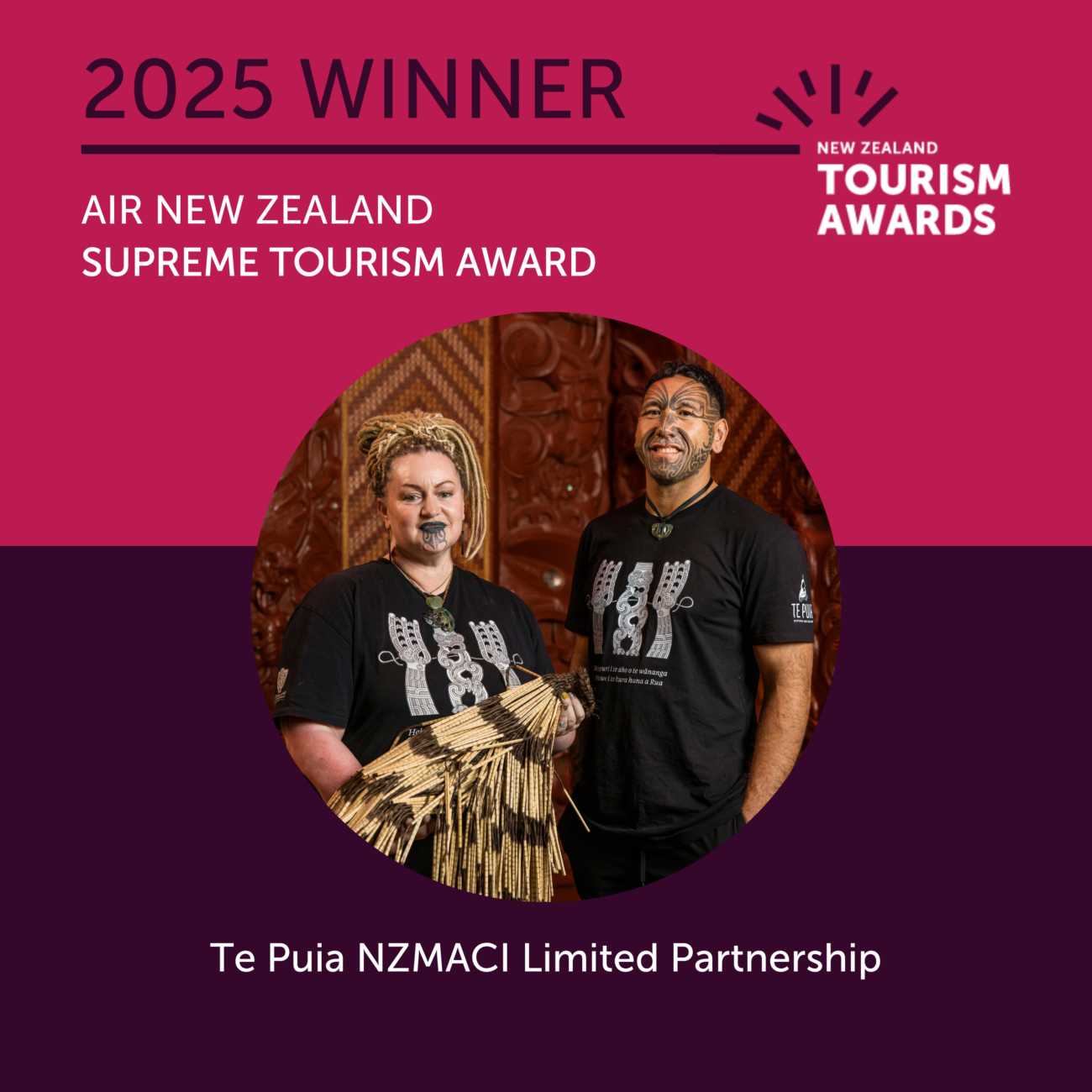These carvings by Tohunga Whakairo (Master Carver) Alby Te Pou share the deep genealogical connection to the Whakarewarewa whenua (land) at Te Puia and its volcanic activity. It’s important to take in the kōrero (story) below as you look at these whakairo rākau (wood carvings) and to interpret them through your own perspective. What you see before you is an opportunity to reflect on the obligation we have to look after and maintain our connection with taiao (nature).
This all begins with the subterranean atua Rūaumoko (god of volcanic activity) and Auahi Tūroa (comets), however, the main part of this kōrero (story) is centred around the whānau (family) of Ariki Tohunga (high chief) Ngātoroirangi and his sisters Kuiwai and Haungaroa, as well as their tūpuna (ancestors) in the form of subterranean deities Te Pupu and Te Hoata. Connecting spiritually with each other to survive, the power and love seen through whakapapa (family) has led to this geothermal valley you see here at Whakarewarewa today.
Tohunga Ariki (high chief) Ngātoroirangi sailed on Te Arawa waka from Hawaiiki to Aotearoa. Upon arrival, in various places across the motu (area), he performed the Whakapakoko ritual (binding of stones), taking a stone he had brought with him from Marae Taputapuātea in Ra’iātea (a tapu island in Tahiti) and binding it with rope to a stone from significant whenua (land) across Aotearoa’s East Coast and Central North Island to bring mauri (a source of life and energy) for the new land.
Ngātoroirangi longed to claim the virgin peak of Tongariro Maunga (Mountain) and decided to climb to the summit where he would again perform the Whakapakoko ritual. He left his people at the base of the maunga (mountain) and told them to fast and eat no food as this was a tapu (sacred) ascent.
Te Arawa’s Te Keepa Marsh shared the kōrero that Ngātoroirangi said: “You will see my tohu (sign), lightening, thunder and rain – then you will know the mana of the maunga has come under my authority.” This sign would mean his people could break the fast and eat again.
Ngātoroirangi climbed Tongariro with his servant Ngāuruahoe. It took a long time and his people thought he must have died, so they started eating as they were hungry. As this was happening, Ngātoroirangi was reaching the peak of Tongariro, but he was struck hard by the cold south winds which had intensified because of the tapu being broken, further exposing him to the icy temperatures. His servant Ngāuruahoe died from the cold and Ngātoroirangi knew he was very close to death himself.
He channelled deep within and made a spiritual connection with his sisters in Hawaiiki to let them know he was in trouble and needed their help.
He said the karakia (prayer):
“Kuiwai e!, Haungaroa e!, ka riro au i te Tonga. Tukuna mai te ahi!”
“Oh Kuiwai, Oh Haungaroa, I have been captured by the southern winds. Send me fire!”
Seeing a fire in front of them turn blue back at Hawaiiki as a tohu (sign), Ngātoroirangi’s sisters Kuiwai and Haungaroa received their brother’s karakia. As high priestesses with powerful lineage through their mother line to Rūaumoko, they called upon their tūpuna (ancestors). Their subterranean tūpuna came – Te Pupu and Te Hoata and took six kete (baskets) of fire to help Ngātoroirangi.
They travelled from Hawaiiki across the ring of fire and emerged from the earth forming geothermal activity at Whakaari (White Island) and Tarawera, then resting here at Whakarewarewa in a space called Te Puke a Te Ruahine, to gather strength before they carried on south. Everywhere Te Pupu and Te Hoata explored here within the Whakarewarewa Valley brought minerals and geothermal elements to the surface like the silica, Pōhutu Geyser, hot springs and mud pools.
Te Pupu and Te Hoata then continued on towards Ngātoroirangi, emerging at Tikitere, Waimangu, Ōrākei Kōrako, Tokaanu and then arrived at Tongariro, with a final kete (basket) of fire left for Ngātoroirangi.
The kete (basket) of fire heated a pool of water on the maunga (mountain) and Ngātoroirangi descended into it, with the warmth saving his life. This is where the term Wai Ariki comes from (Water from a Chief).
After surviving this, Ngātoroirangi travelled back towards the Coast and settled on Mōtītī Island, where his sisters Kuiwai and Haungaroa came and joined him.
Thank you to Air New Zealand for gifting us laminated timber beams from a hangar refurbished in 2020 for use in these pou whakairo rākau (wood carvings).
Source: NZMACI Pou Tāhu Te Waata Cribb’s kōrero on this history.

